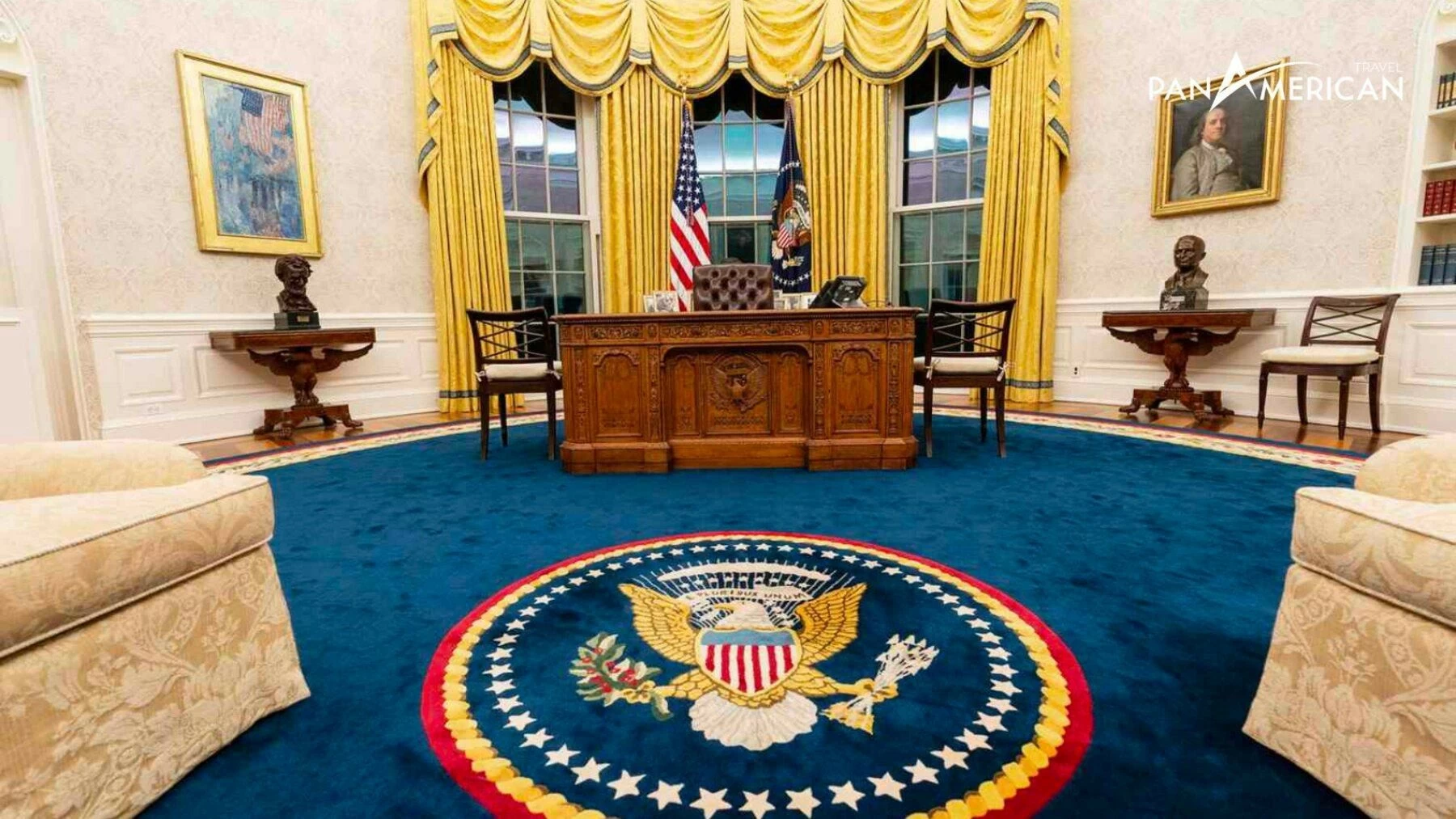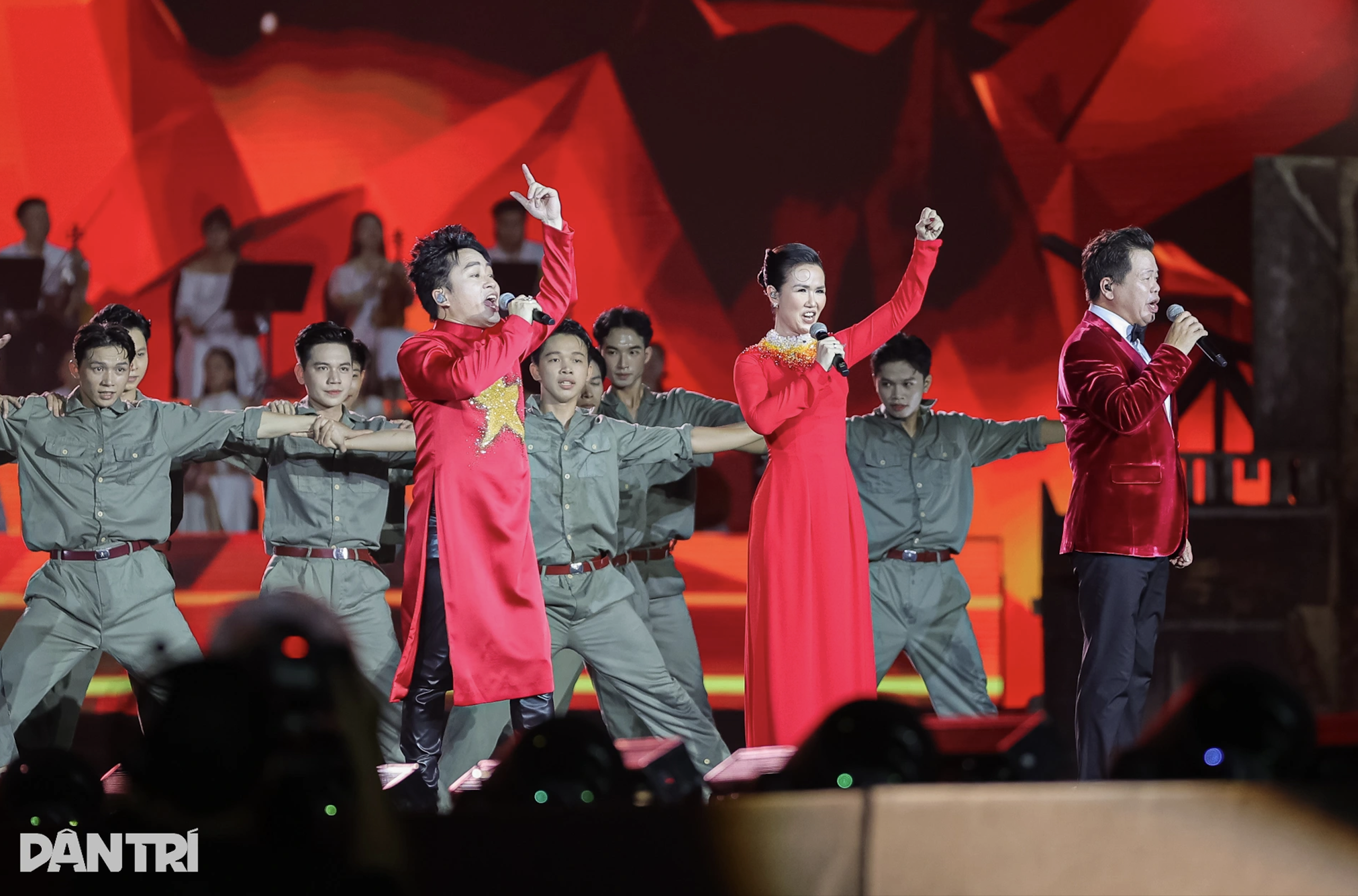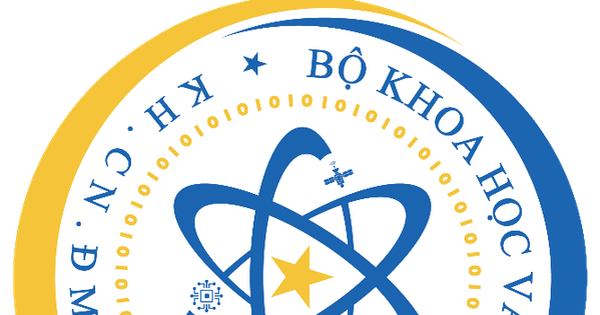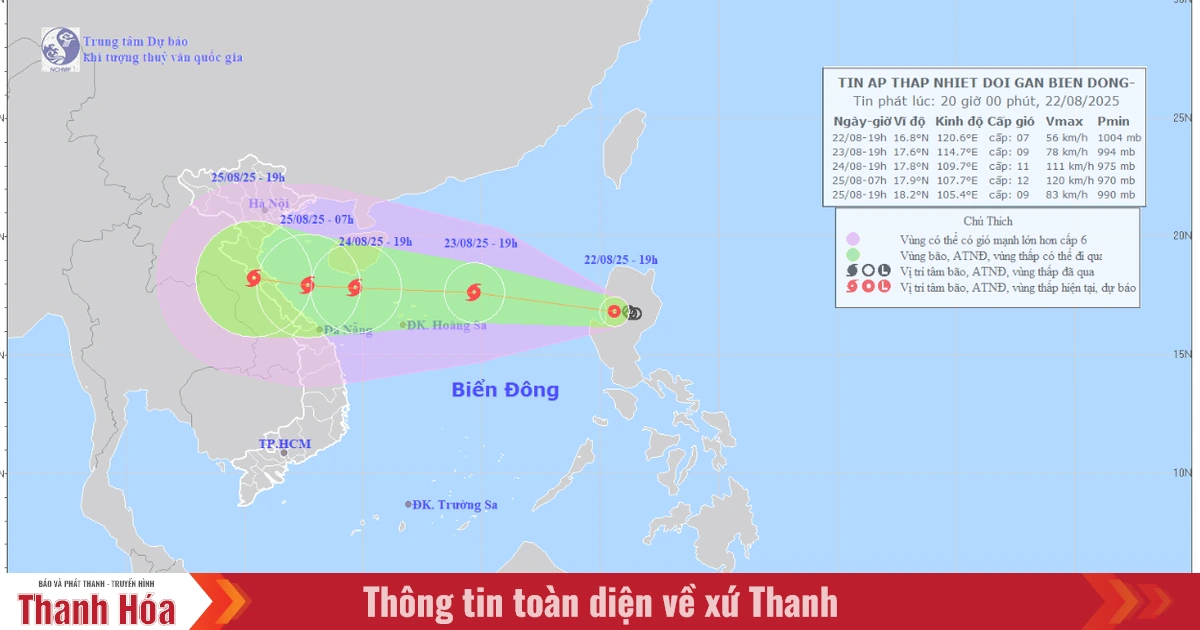According to the US Constitution, the presidential term is 4 years. Presidential candidates must satisfy the mandatory standards set by the US Constitution such as being at least 35 years old, having lived in the US continuously for more than 14 years, being born in the US and being a citizen of this country.
 |
| The US President's office inside the White House. |
Since 1778, the US presidential election has taken place every four years on the Tuesday following the first Monday in November. This year's race for the White House takes place on Tuesday, November 5, between Republican candidate, former President Donald Trump and Democratic candidate, current Vice President Kamala Harris.
According to the US Constitution, the term of the President is 4 years, the term of the House of Representatives is 2 years, and the term of the Senator is 6 years. The US Presidential candidate must satisfy the mandatory standards set by the US Constitution such as being at least 35 years old, having lived in the US continuously for more than 14 years, and being born in the US and being a US citizen.Term limits
After winning the November election, according to the US Constitution, the newly elected President will take office at noon on January 20 of the following year. This is also the time when the previous President's term ends. The Presidential inauguration ceremony is held at the White House in Washington, DC.
Each term of office for the President of the United States lasts four years, and according to the amendment to the Constitution ratified on February 27, 1951, each President can only serve no more than two terms. If a person has served as President or Acting President for more than two years during a term in which another person was elected President, he or she can only be elected to the office of President for no more than one term.
In fact, before this regulation, in American history, there was only one person who was elected President for three consecutive terms, Franklin Roosevelt, who was President for 12 consecutive years (from 1933-1945); 5 people who were elected for two terms were Dwight D. Eisenhower (1952-1959), Richard Nixon (1969-1975), Ronald Reagan (1980-1987), Bill Clinton (1992-2001), George W. Bush (2001-2008) and Barack Obama (2008-2016).
In the event that the President is unable to perform his duties (resigns, becomes incapacitated, or dies), Congress will transfer power to the Vice President. If both the President and Vice President fall into this situation, according to the US Constitution, Congress has the right to decide what happens next.
Most recently, the Presidential Succession Act, which took effect in 1974, states that the Speaker of the House is second in line to the presidency (after the Vice President), followed by the President of the Senate (pro tempore), then cabinet members—starting with the Secretary of State.
During his term, the President can be removed from office by Congress through a complicated process. To remove the President, the House of Representatives must pass a resolution of impeachment and nominate a number of senators to represent him as plaintiffs in a trial held by the Senate. The Chief Justice of the Supreme Court presides over this trial. The decision to remove the President must be supported by at least two-thirds of the senators.
How much power?
According to the US Constitution, the President must assume two functions: being both the head of state (like the King or President of many other countries), and the head of the executive branch (like the Prime Minister of other countries).
As head of state, the President of the United States represents the United States both at home and abroad. In this capacity, the President must perform a series of protocol duties, such as receiving credentials from foreign ambassadors, presiding over celebratory dinners, and inaugurating important cultural, artistic, and sporting events. The President signs laws passed by Congress, concludes treaties with foreign countries, and appoints senior officials in the federal government. The President also has the power to call extraordinary sessions of either or both houses of Congress.
As head of the executive branch, the President is responsible for making treaties; appointing ambassadors, ministers, advisers, Supreme Court justices, and other senior officials of the federal government. The President is also required to report on the state of the union to both houses of Congress; and to propose certain bills, and to issue rules, regulations, and directives that have the force of law for federal agencies without the need for congressional approval.
In terms of legislation, the President has the power to veto any bill from Congress, unless more than two-thirds of the members in each house override the veto.
In addition to the power to veto bills, the President is also responsible for recommending certain bills to Congress for consideration and approval. The President's recommendations for bills are usually expressed in the State of the Union Address at the beginning of the year, in the draft budget, and in specific recommendations.
Most of these presidential recommendations are also requests from the executive branch to the legislative branch. Whether these recommendations become law or not depends largely on the political ability of the President and the relative dominance of the President's party in Congress.
In terms of the judiciary, the President has the power to appoint federal judges, including judges on the Supreme Court, but must be approved by the Senate. The President can also overturn sentences or pardon criminals who have violated federal laws.
In addition, the US President is also considered the symbolic leader of his political party. The programs and initiatives that the President puts forth often reflect the views of the party of which he is a member.
It can be said that the President is the center of American politics. The President has great power in foreign and military affairs, but is usually not strong in domestic policy decisions because he is also dependent on Congress. Normally, the President can only achieve domestic policy goals when he convinces Congress and political parties that their interests in this case are similar.
To monitor the power of the President, Vice President and other senior officials in the government, the US Constitution stipulates that the House of Representatives is the body with the power to impeach these people, and the Senate is the body with the power to try them. In US history, there have been 3 Presidents who were impeached, but all survived, namely Mr. Andrew Johnson, Bill Clinton and Donald Trump. Meanwhile, Mr. Richard Nixon resigned because of the Watergate scandal before being impeached.
Very difficult to depose
The US President is the only person with full executive power in the United States. The concentration of power in the hands of one person allows the President to act freely and with great effect.
The President's term of office is four years, regardless of public approval ratings or the support of a majority of members of Congress. This allows the President to make temporary decisions that are unpopular with the public without fear of losing his position.
The relative division of powers in the "Separation of Powers" system has allowed the President to act freely, without fear of being hindered too much, especially by parliamentary intervention.
The electoral college system has made it so that the President must always be the candidate of a major political party. The increased role of political parties has also increased the role of the President. Therefore, the President is also considered the leader of his party.
Article 2 of the US Constitution gives the President "executive power and military command" which has created conditions for the President to make many important decisions. For example: President Jefferson's decision to purchase the state of Louisiana; a series of decisions by President Lincoln during the Civil War; President Roosevelt's declaration of a state of emergency leading to the mobilization of national defense and deployment of troops abroad; President Truman's decision to confiscate steel mills,... have gradually increased the power of the US President.
Source: https://baoquocte.vn/election-my-2024-quyen-luc-va-gioi-han-cua-tong-thong-my-292191.html







![[Photo] President Luong Cuong receives delegation of the Youth Committee of the Liberal Democratic Party of Japan](https://vstatic.vietnam.vn/vietnam/resource/IMAGE/2025/8/22/2632d7f5cf4f4a8e90ce5f5e1989194a)
![[Photo] Prime Minister Pham Minh Chinh chairs the conference to review the 2024-2025 school year and deploy tasks for the 2025-2026 school year.](https://vstatic.vietnam.vn/vietnam/resource/IMAGE/2025/8/22/2ca5ed79ce6a46a1ac7706a42cefafae)








































































Comment (0)